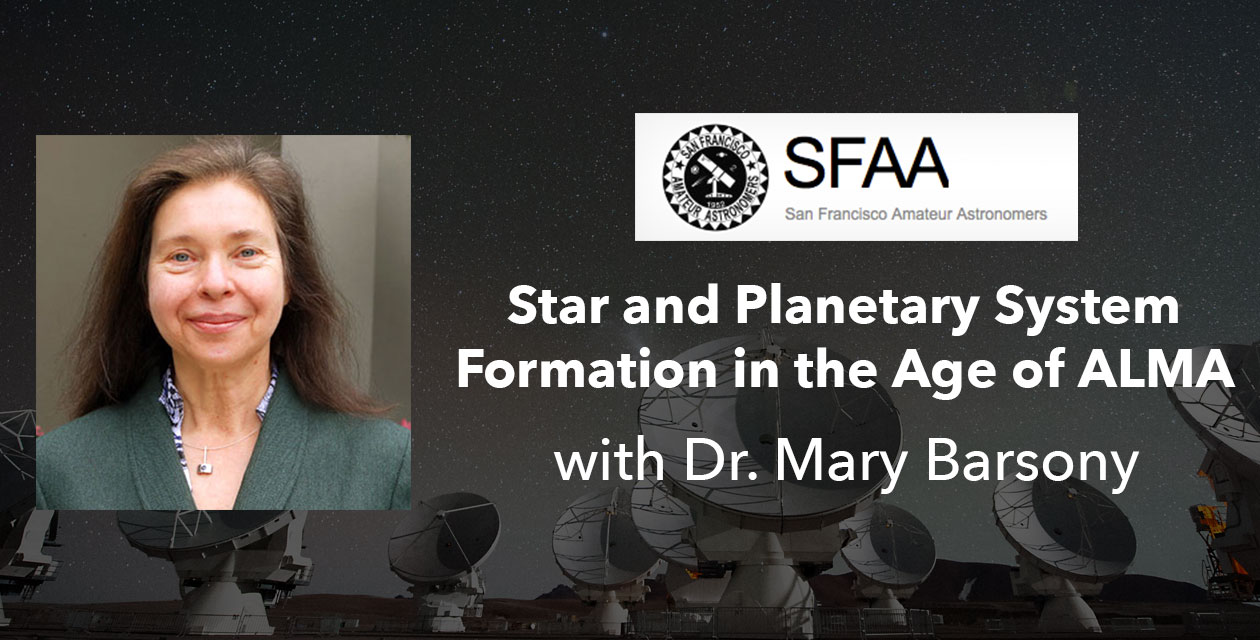Star and Planetary System Formation in the Age of ALMA (the Atacama Large Millimeter/submillimeter Array)

Time: Wednesday, Sep 19, 2018 -
Location: Randall Museum, San Francisco, CA
The Atacama Large Millimeter/submillimeter Array (ALMA) consists of 66 radio telescopes with 12 7-meter diameter and 54 12-meter diameter antennas operating as one instrument. This unique array can image radiation from astronomical sources over the entire 0.3 millimeter to 9.6 millimeter wavelength range at unprecedented sensitivities, capable of producing images at higher resolution than Hubble. The instrument is located at 16,000 ft (5,000 m) elevation, in the driest desert on Earth, the Atacama Desert in Chile, providing maximum transparency through Earth’s atmosphere at these wavelengths. It is a cooperative project between North America (U.S. & Canada), the member states of the European Southern Observatory, East Asia (Japan and Taiwan), and Chile.
Dr. Mary Barsony, SETI Institute Research Astronomer, will present a brief history of millimeter/submillimeter-wave astronomy and its seminal contributions to our current understanding of star and planetary system formation, both in our Galaxy, and in other galaxies. This will set the stage to put into context the remarkable, ground-breaking results ALMA is revealing -- from the detailed structure of planet-forming disks all the way back to the formation of the first stars just 250 million years after the Big Bang.
For more information visit, https://www.sfaa-astronomy.org/monthly_lectures/randall/
